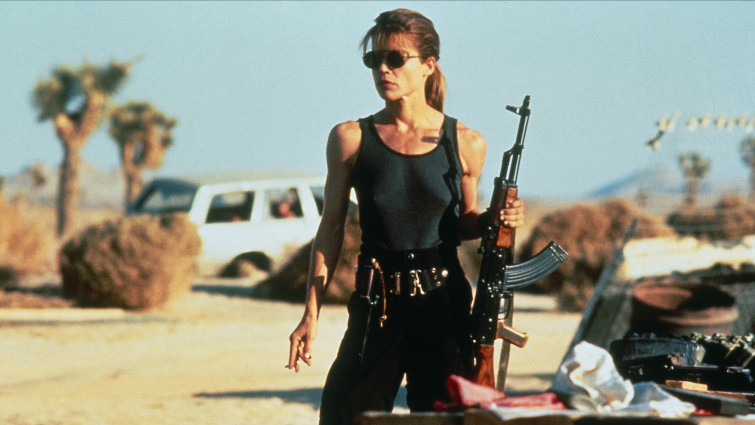

Member review

Terminator 2 Judgment Day
Featuring groundbreaking special effects that still look spectacular, this action-packed sequel sees the original Terminator now act as...
Certificate
Duration137 mins
Review by
- Beth, 13
- 38 reviews
Carolco Pictures and Pacific Western's Terminator 2: Judgement Day.
Carolco Pictures and Pacific Western's Terminator 2: Judgement Day is a a brilliant action sci-fi film, but it is not suitable for younger viewers, due to scenes of violence. Viewers do not have to have seen the first Terminator films in the franchise. Despite this, it may be useful for viewers to have seen the first Terminator films for context. Other films in the franchise include (chronological order): Terminator Genisys, The Terminator, Terminator 2: Judgment Day, Terminator: Dark Fate, Terminator 3: Rise of the Machines, Terminator Salvation.
Terminator 2: Judgement Day is about perseverance and determination and that sometimes you have to do the wrong thing for the right reason. It also teaches people that you must protect who and what you love. Despite the narrative not covering many days in real time, many lessons are conveyed for both viewers and characters.
The narrative is set in and around Los Angeles in 2029AD and scenes occur in many different venues. This allows certain parts of the plot to be accurately fulfilled with a maximum effect for characters and viewers alike. Thus, viewers can enjoy Terminator 2: Judgement Day as it's full setting potential has been fulfilled.
Sound has also been a great plus point in this film. Music is used for an emotional effect: tension, superiority and atmosphere. Sound effects are also used to illustrate what is happening and some sounds are louder to emphasise the action. Another production technique used is a voice over, that is used to explain things to the viewer that the characters cannot hear.
Carolco Pictures and Pacific Western's Terminator 2: Judgement Day uses a dark colour scheme to convey a serious atmosphere. This is also seen in the colours worn by the characters. If the film had been in monochrome, the film would still have been largely enjoyable. However, the clever use of colour allows viewers to see the setting clearly and understand the characters' personalities and intentions.
The characters' relationships change through out the narrative. Characters' can be distrusting of each other, when they are unsure of them, but they can work together once they understand each other's motives. This also becomes easier once the situation has been explained. They are then able to achieve a common goal for the greater good, even if this is not what they want to happen.
Close ups are used to emphasise emotion and an event. They are also used to highlight the consequence of a character's action. Tracking shots are used to follow a character who is speaking or to follow something that happened. The camera also uses a long shot to step back from the scene, capturing the bigger picture.